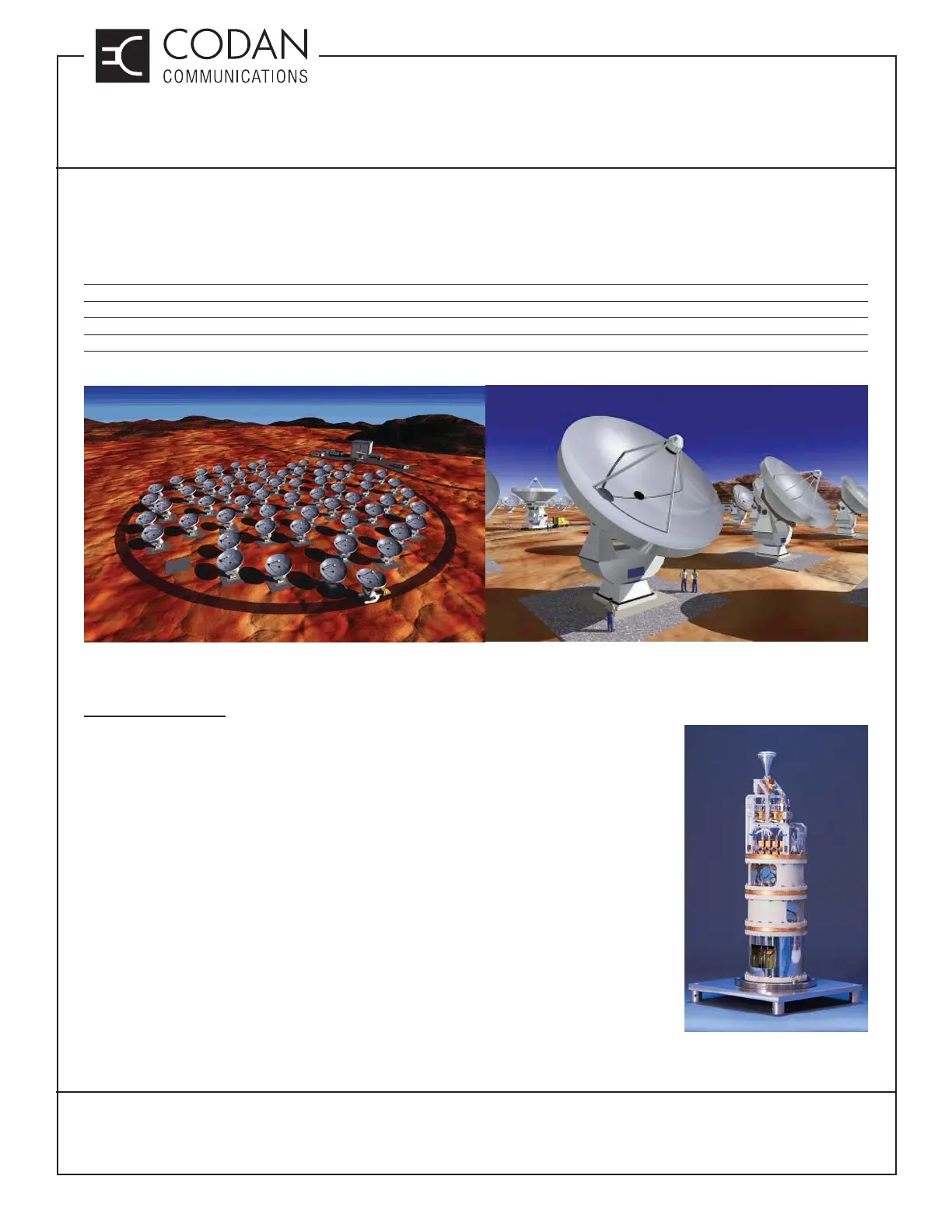EN130 Atacama Large Millimeter Array (ALMA)
EXPLANATORY NOTES
Page 2 of 2
LMRSALES@CODANCOMMS.COM
CODANCOMMS.COMEXPLANATORY NOTE:
EN130, REV 2-1-0, © Mar 2013
CANADA/US +1 250 382 8268 | TOLL FREE +1 800 664 4066
ALMA’s ability to detect remarkably faint millimetre emission and to create highly detailed images of the sources
of that emission, will give it capabilities not found in any other astronomical instrument. ALMA will therefore be
able to observe phenomena previously out of reach to astronomers and astrophysicists. These capabilities include
studying:
• The formation of galaxies (eg. the Milky Way) at the earliest times in cosmic history
• New planets forming around young stars in our galaxy
• The birth of new stars in spinning clouds of gas and dust
• The evolutionary stages of aging stars as they shed their outer atmospheres on the way to becoming white dwarfs
• Interstellar clouds of gas and dust that are chemical factories forming complex molecules and organic chemicals related to the building blocks of life.
Artist’s conception of the antennas and compact array for the Atacama Large Millimeter Array
Image courtesy of NRAO/AUI and ESO
Codan and ALMA
The millimetre instrumentation laboratory of the National Research Council of Canada’s
Herzberg Institute of Astrophysics in Victoria, BC, is one of the few facilities in the
world with expertise in superconducting detector technology for millimetre waves. This
technology employs tiny switches about 50 times smaller than the width of a human
hair, operating at liquid helium temperatures of -269 °C (just a few degrees above
absolute zero, -273 °C) to detect and amplify the incredibly faint whispers of radiation
that reach earth from the remotest parts of the cosmos. The physics of very cold
temperatures implies that random noise in electronics circuits virtually disappears.
This means that the receiver can detect very faint signals without interference.
Canada will supply 73 receivers (1 for each antenna and 7 spares) of unprecedented
sensitivity for the 3-millimetre wavelength band - the ALMA Band 3 Receivers. Codan
was contracted by the National Research Council of Canada’s Herzberg Institute
of Astrophysic to build portions of the 84 - 116 GHz ALMA Band 3 Receivers and
completed the contract on March 31, 2011. Codan built a clean room that meets
requirements for ISO Class 7 standards and MIL-STD-1686 static control standards.
Complete Receiver Assembly
